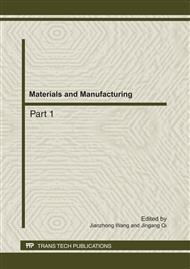p.359
p.364
p.368
p.372
p.376
p.380
p.385
p.390
p.395
Micronano Structure and Mechanics Behavior of Mosquito’s Proboscis Biomaterials with Applications to Microneedle Design
Abstract:
The mouthparts of female mosquitoes have evolved to form a special proboscis, a natural biomicroelectromechanical system, which is used for painlessly penetrating human skin and sucking blood. The structure of the mosquito fascicle is observed using a scanning electron microscope, and the mechanical property of the labrum and maxillae, two of the most important parts of the mosquito’s fascicle is studied. The micronano structure and the special biomaterials of the mosquito’s proboscis make the mosquito penetrate easily into human skin with a surprising low force, which is measured to be only tens of micro-Newton. Our obtained results are helpful for the optimum design of the microneedles and transdermal drug delivery system.
Info:
Periodical:
Pages:
376-379
Citation:
Online since:
July 2011
Authors:
Keywords:
Price:
Сopyright:
© 2011 Trans Tech Publications Ltd. All Rights Reserved
Share:
Citation:



